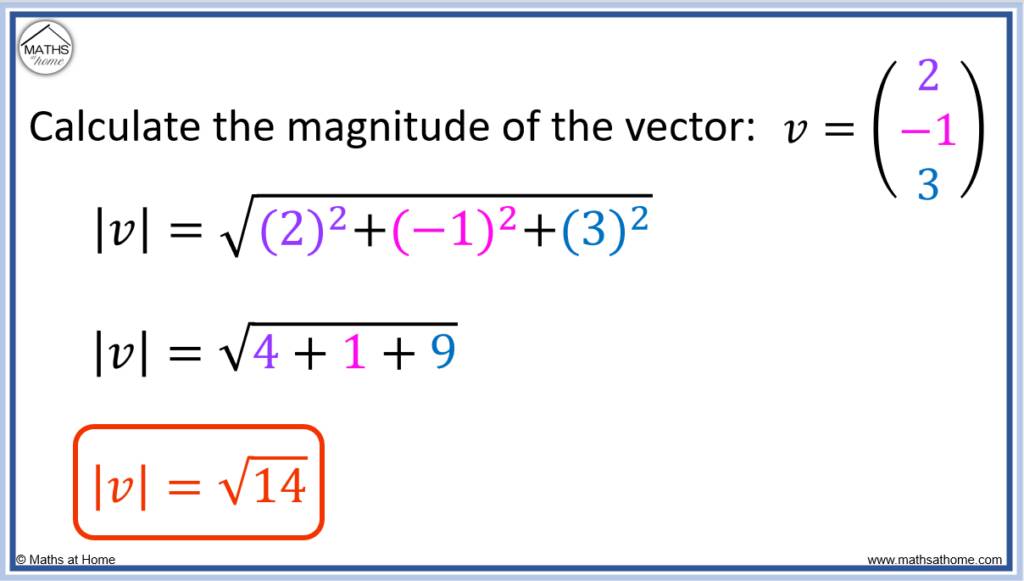Vector Magnitude Calculation
Magnitude or length or modulus of a Vectors
In mathematics and physics, the magnitude, length, or modulus of a vector refers to its size or extent. It is a scalar value that represents the "length" or "size" of the vector, regardless of its direction.
The magnitude of a vector is denoted by ||v||, where v represents the vector. For a vector v with components (v₁, v₂, ..., vn) in an n-dimensional space, the magnitude can be calculated using the following formula:
||v|| = sqrt(v₁² + v₂² + ... + vn²)
In other words, you square each component of the vector, sum up the squared values, and take the square root of the result to obtain the magnitude.
The magnitude of a vector is always a non-negative value. If the magnitude is zero, it means the vector has no length and is referred to as a zero vector. If the magnitude is nonzero, it represents the length of the vector in a given unit of measurement.
The magnitude of a vector is useful in various applications, such as determining the strength or intensity of a physical quantity represented by the vector, calculating distances, determining the magnitude of forces or velocities, and many other mathematical and scientific calculations.
The magnitude (also referred to as length or modulus) of a vector is a scalar value that represents the "size" or "length" of the vector. It provides information about the vector's magnitude without considering its direction.
In a two-dimensional vector space, the magnitude of a vector v = (v₁, v₂) can be calculated using the Pythagorean theorem:
|v| = √(v₁² + v₂²)
In a three-dimensional vector space, the magnitude of a vector v = (v₁, v₂, v₃) can be calculated as follows:
|v| = √(v₁² + v₂² + v₃²)
In general, for an n-dimensional vector v = (v₁, v₂, ..., vₙ), the magnitude can be calculated using the Euclidean norm:
|v| = √(v₁² + v₂² + ... + vₙ²)
The magnitude of a vector is always a non-negative value. It provides information about the vector's overall "length" or "size" but does not include any information about its direction.
Addition and subtraction of vectors
In mathematics, vectors can be added and subtracted using vector addition and vector subtraction operations, respectively. These operations follow specific rules based on vector components.
Vector Addition: To add two vectors v = (v₁, v₂, ..., vₙ) and w = (w₁, w₂, ..., wₙ), you simply add their corresponding components together:
v + w = (v₁ + w₁, v₂ + w₂, ..., vₙ + wₙ)
For example, if v = (3, 2) and w = (1, -1), then v + w = (3 + 1, 2 + (-1)) = (4, 1).
Vector Subtraction: To subtract one vector w = (w₁, w₂, ..., wₙ) from another vector v = (v₁, v₂, ..., vₙ), you subtract their corresponding components:
v - w = (v₁ - w₁, v₂ - w₂, ..., vₙ - wₙ)
For example, if v = (3, 2) and w = (1, -1), then v - w = (3 - 1, 2 - (-1)) = (2, 3).
When adding or subtracting vectors, it's important to ensure that the vectors have the same dimensionality (the same number of components). If the vectors have different dimensions, the addition or subtraction operation is not defined.
It's worth noting that vector addition and subtraction operations are commutative, meaning the order in which you add or subtract vectors does not affect the result:


